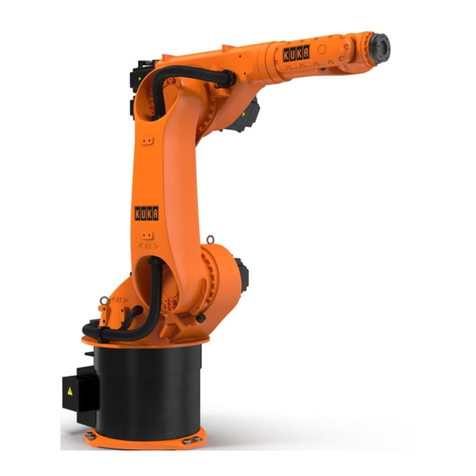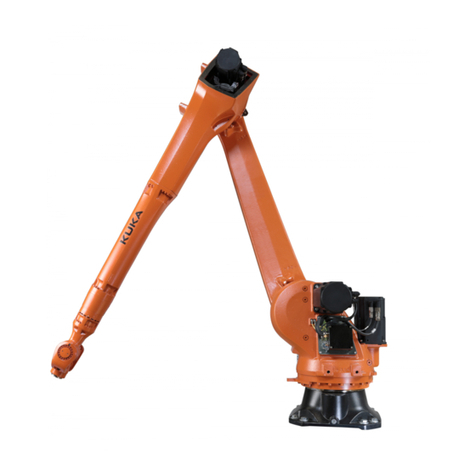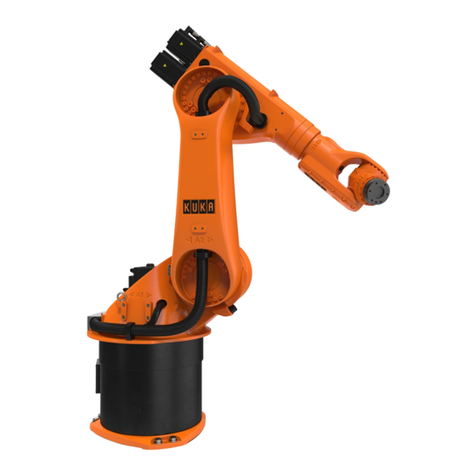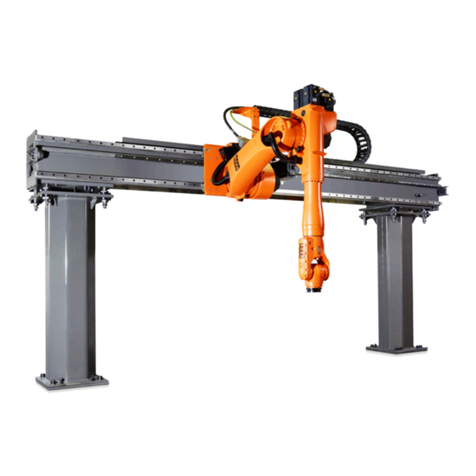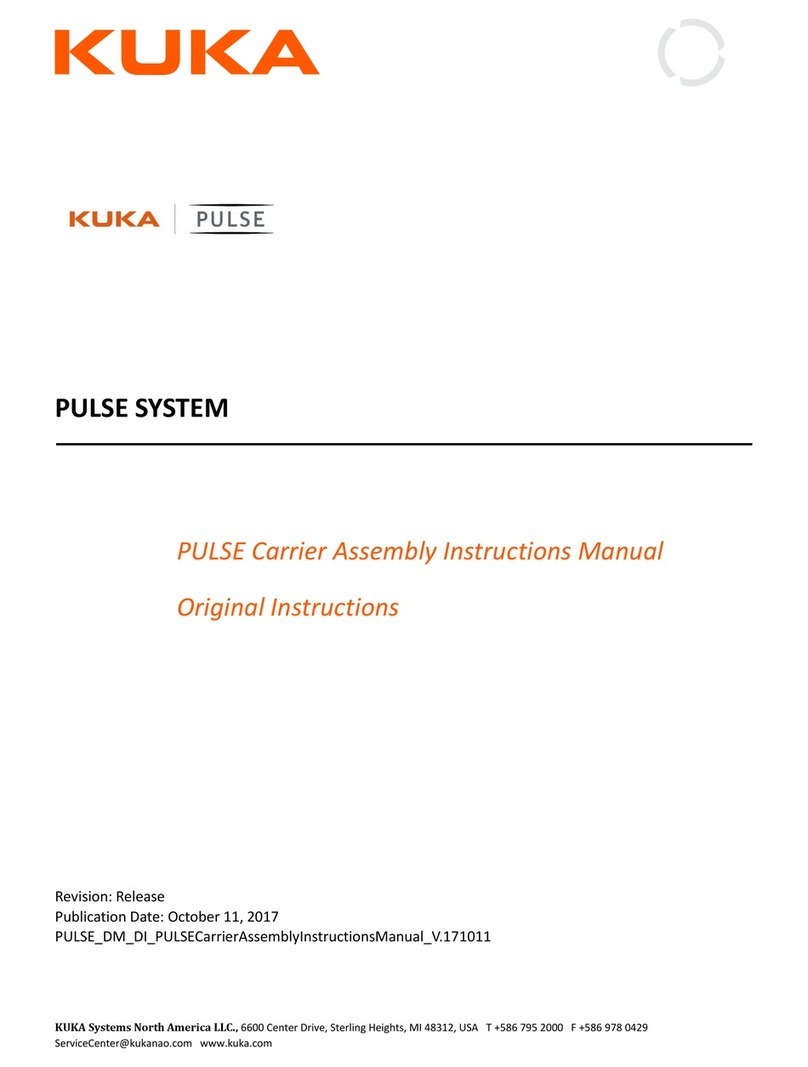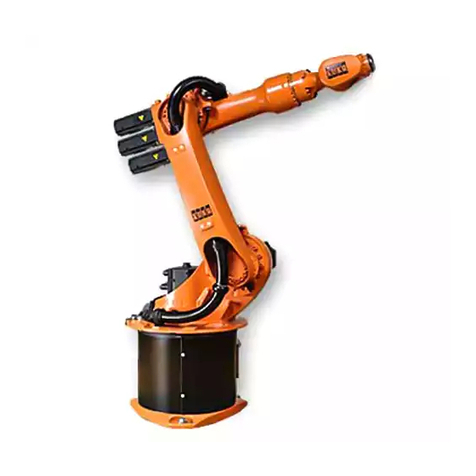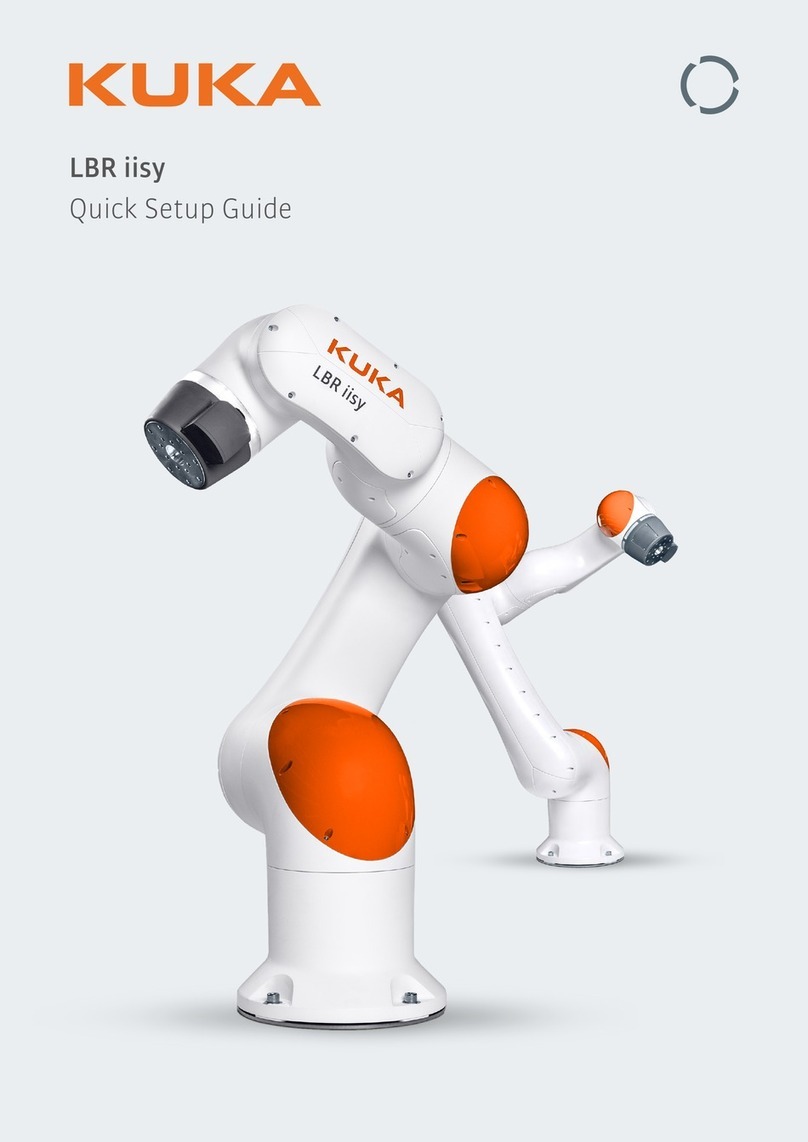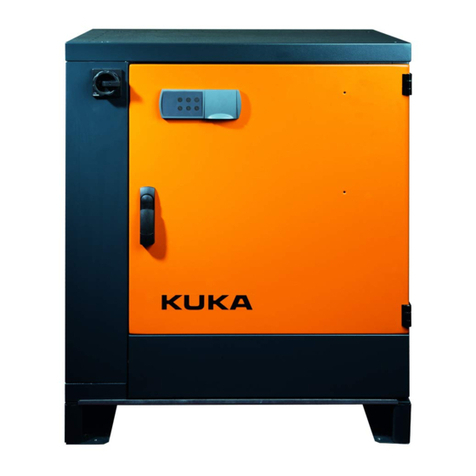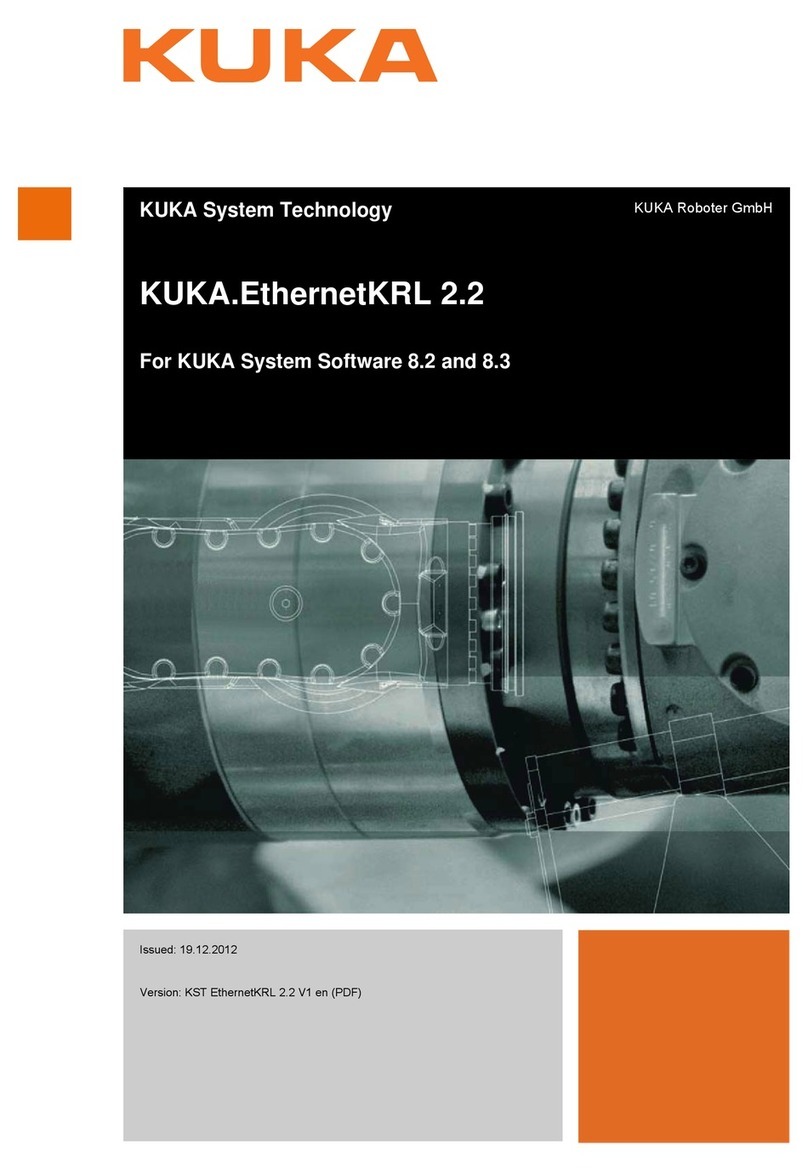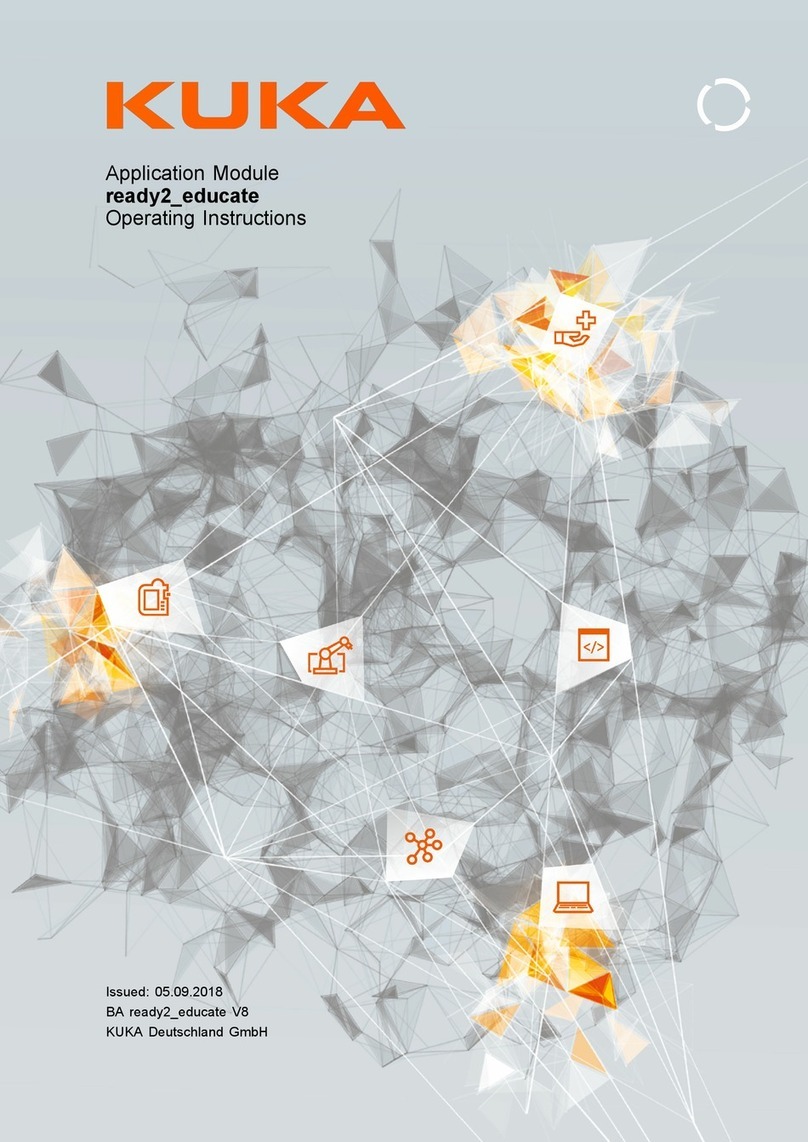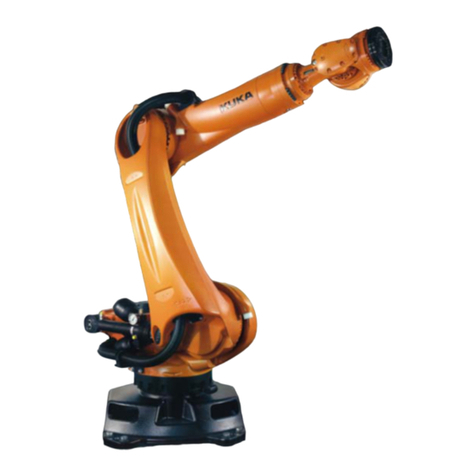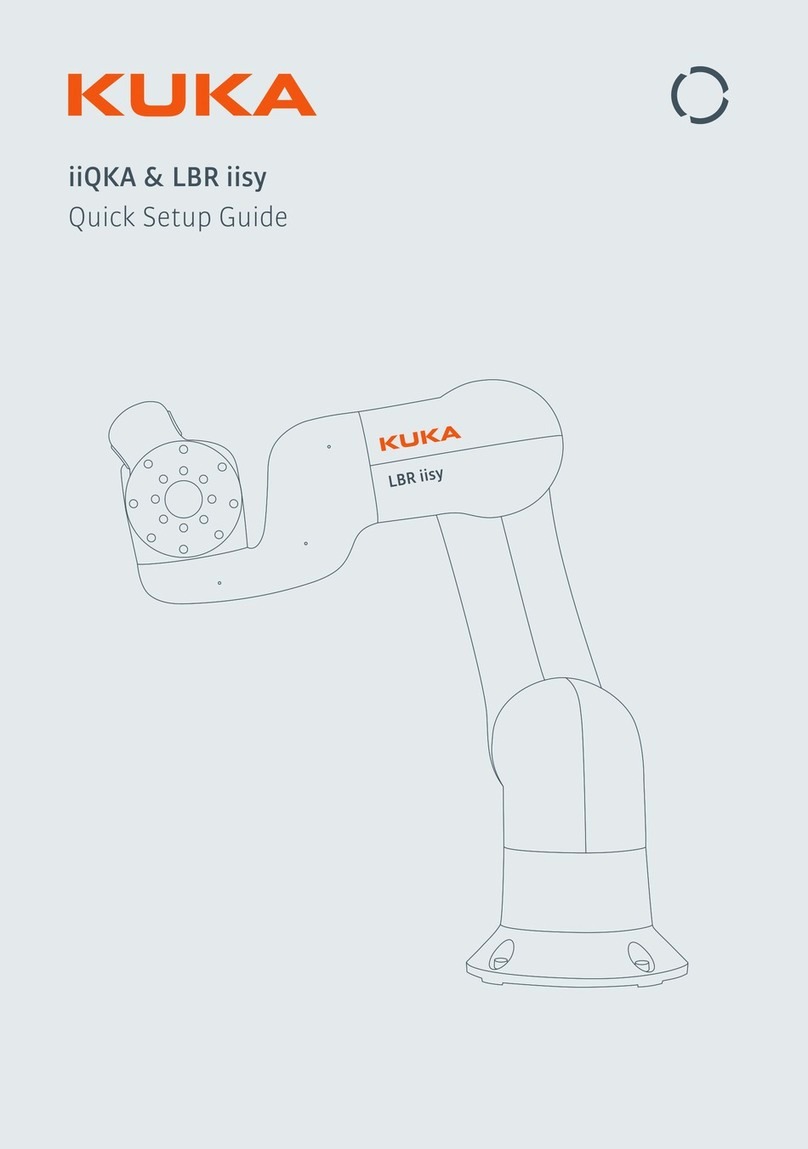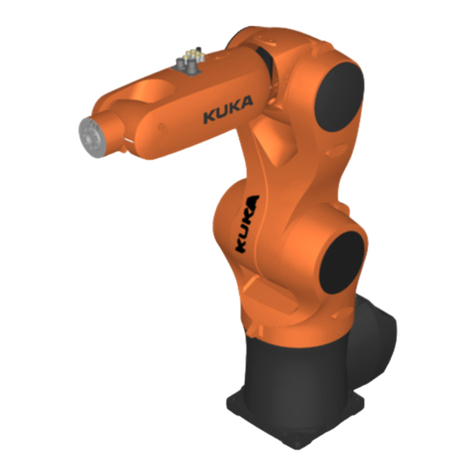
4 / 127 Issued: 18.06.2015 Version: Spez KR QUANTEC extra V6
KR QUANTEC extra
4.7.8.1 Stopping distances and stopping times for STOP 0, axis 1 to axis 3 .............. 68
4.7.8.2 Stopping distances and stopping times for STOP 1, axis 1 ............................ 69
4.7.8.3 Stopping distances and stopping times for STOP 1, axis 2 ............................ 71
4.7.8.4 Stopping distances and stopping times for STOP 1, axis 3 ............................ 73
4.7.9 Stopping distances and times, KR 120 R2900 extra C ........................................ 73
4.7.9.1 Stopping distances and stopping times for STOP 0, axis 1 to axis 3 .............. 73
4.7.9.2 Stopping distances and stopping times for STOP 1, axis 1 ............................ 74
4.7.9.3 Stopping distances and stopping times for STOP 1, axis 2 ............................ 76
4.7.9.4 Stopping distances and stopping times for STOP 1, axis 3 ............................ 78
4.7.10 Stopping distances and times, KR 90 R3100 extra .............................................. 78
4.7.10.1 Stopping distances and stopping times for STOP 0, axis 1 to axis 3 .............. 78
4.7.10.2 Stopping distances and stopping times for STOP 1, axis 1 ............................ 79
4.7.10.3 Stopping distances and stopping times for STOP 1, axis 2 ............................ 81
4.7.10.4 Stopping distances and stopping times for STOP 1, axis 3 ............................ 83
4.7.11 Stopping distances and times, KR 90 R3100 extra C .......................................... 83
4.7.11.1 Stopping distances and stopping times for STOP 0, axis 1 to axis 3 .............. 83
4.7.11.2 Stopping distances and stopping times for STOP 1, axis 1 ............................ 84
4.7.11.3 Stopping distances and stopping times for STOP 1, axis 2 ............................ 86
4.7.11.4 Stopping distances and stopping times for STOP 1, axis 3 ............................ 88
5 Safety ............................................................................................................ 89
5.1 General ...................................................................................................................... 89
5.1.1 Liability .................................................................................................................89
5.1.2 Intended use of the industrial robot ...................................................................... 90
5.1.3 EC declaration of conformity and declaration of incorporation ............................. 90
5.1.4 Terms used .......................................................................................................... 91
5.2 Personnel .................................................................................................................. 91
5.3 Workspace, safety zone and danger zone ................................................................ 92
5.4 Overview of protective equipment ............................................................................. 93
5.4.1 Mechanical end stops ........................................................................................... 93
5.4.2 Mechanical axis range limitation (optional) ........................................................... 93
5.4.3 Axis range monitoring (optional) ........................................................................... 93
5.4.4 Options for moving the manipulator without drive energy .................................... 94
5.4.5 Labeling on the industrial robot ............................................................................ 94
5.5 Safety measures ........................................................................................................ 95
5.5.1 General safety measures ..................................................................................... 95
5.5.2 Transportation ...................................................................................................... 96
5.5.3 Start-up and recommissioning .............................................................................. 96
5.5.4 Manual mode ........................................................................................................ 98
5.5.5 Automatic mode ................................................................................................... 98
5.5.6 Maintenance and repair ........................................................................................ 99
5.5.7 Decommissioning, storage and disposal .............................................................. 100
5.6 Applied norms and regulations .................................................................................. 100
6 Planning ........................................................................................................ 103
6.1 Mounting base with centering .................................................................................... 103
6.2 Machine frame mounting ........................................................................................... 105
6.3 Connecting cables and interfaces ............................................................................. 106
7 Transportation ............................................................................................. 109

